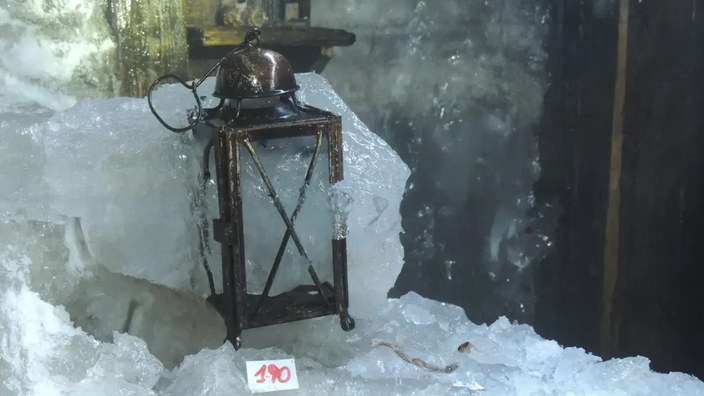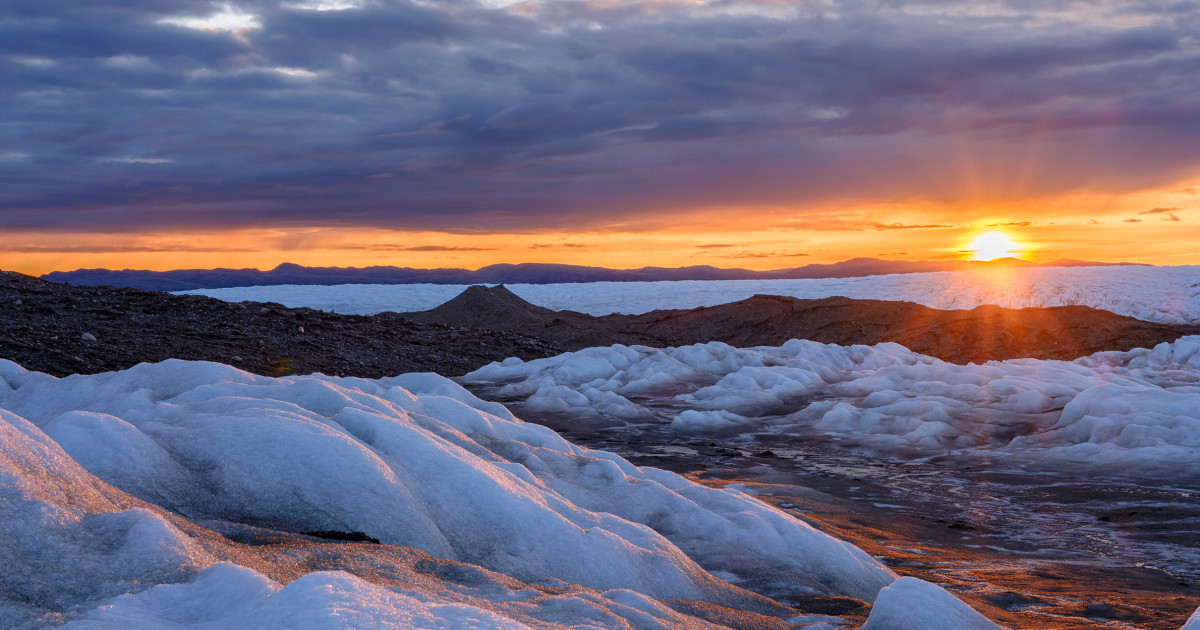This is an unexpected consequence of the inexorable melting of European glaciers: at the Stelvio Pass, in the Italian Alps, the retreat of the ice cover has once again made accessible former Austro-Hungarian barracks dating from the First World War.
Not far from the town of Bormio (Lombardy), these tunnels abandoned in November 1918 preserve pell-mell, in exceptional conditions, vestiges of an execrable daily life and a few weapons.
So many memories of the Guerra Bianca - the
“White War”
-, the name given in Italy to one of the most icy and little-known fronts of the First World War, which has resurfaced for a few years from the cold Alpine entrails.
Read also: An Alpine glacier returns a body more than 40 years later
Towards the summit of Monte Scorluzzo, at an altitude of 3000 meters, one of the innumerable barracks which punctuated the front line had been installed directly on the rock, in a cavernous shelter placed under the shelter of the Italian sentries. Arranged with wooden galleries, this strategic border post which housed around twenty Austro-Hungarian soldiers only became accessible again since 2015, almost a century after its abandonment. Left as it was by its last garrison, no doubt in a hurry to find the bottom of the cows, the site now presents a rare boon for local Italian historians, including those of the White War Museum in Adamello, who took the initiative to excavate and inventory all of its content since 2017.
"The barracks is a White War time capsule that helps us understand the extreme conditions and famines soldiers experienced,"
historian Stefano Morosini, who coordinates heritage projects at Stelvio National Park
, told The
Guardian.
.
Daily life on the Alpine front
For the time being, nearly 300 objects have been extracted from the site, including many food scraps - bottles, cans -, a few coins, helmets, ammunition, mattresses, lighting ... or a whole section of the material environment in which the soldiers of Monte Scorluzzo were surrounded. In the process of restoration, all of these discovered remains will be exhibited in a new museum which should open its doors next year in Bormio.
"We are not only interested in the historical collection, but also in the scientific understanding of the site,"
Stefano Morosini told The
New York Times
.
"Were these barracks polluted?
What were the epidemiological conditions?
How did the soldiers sleep, and what did they suffer from?
What were they eating? ”
.
The Monte Scorluzzo barracks housed the remains of the daily life of its modest Austro-Hungarian garrison.
Museo della Guerra Bianca in Adamello
Not content with being posted at the front, the unfortunate infantrymen quartered at Monte Scorluzzo had to face - in addition to the enemy Italian troops - temperatures that could reach -40 ° C, overcrowding and supply subject to the vagaries of the weather. high mountain. Despite this, this precise sector of the Alpine front remained relatively calm during the conflict, unlike the neighboring massif of the Dolomites, which was more bitterly disputed. This in no way removes the painful experience of the Austro-Hungarian garrison.
"Here, the men spend their days wrapped in shaggy furs, their faces smeared with grease to protect themselves from the gusts of wind, and their nights in holes dug in the snow"
, eloquently described the American war correspondent E. Alexander Powell, as quoted by the
New York Times
.
“
On no front, neither in the scorching plains of Mesopotamia, nor in the frozen marshes of Masuria, nor in the blood-soaked mud of Flanders, does the fighter lead a life as painful as here, on the roof of the world. .
”.
Read also: The kepi of the first French infantryman killed in 1914 enters the Memorial of Haute-Alsace
For Luca Pedrotti, the scientific coordinator of the Stelvio park, the Monte Scorluzzo barracks is above all the occasion to illustrate in an overwhelming way the rapid progression of the melting ice in the region. As a consequence of global warming, the reduction of the snowpack and the alpine glaciers frees, on both sides of the borders, a quantity of more or less ancient vestiges which had been delivered to the mountain. Several dozen dead from the First World War have been found in recent years. Well preserved by the icy climate of the mountain, one of these soldiers was even able to be identified and buried by relatives in 2017, thanks to the papers he kept with him, in the pockets of his uniform.
The soldiers who fell a century ago did not, however, form the only contingent of discoveries delivered by the glaciers retreating from the Alps: in addition to the corpses of mountaineers, the mountain also returned various debris - including a diplomatic bag and a treasure of diamonds - from the Air India Boeing which crashed in 1966 in a Mont Blanc glacier. Without forgetting, of course, the most famous and oldest of the
“men of the ice”
: Ötzi, the Neolithic hunter discovered in 1991. For Stefano Morosini, the accumulation of all these remains unfortunately only forms a meager consolation prize. to the rapid and irremediable transfiguration of the Alpine massif. And he concludes, annoyed:
"The knowledge we are able to gather today from these relics is but a rare bright spot in the whole negative of climate change."








